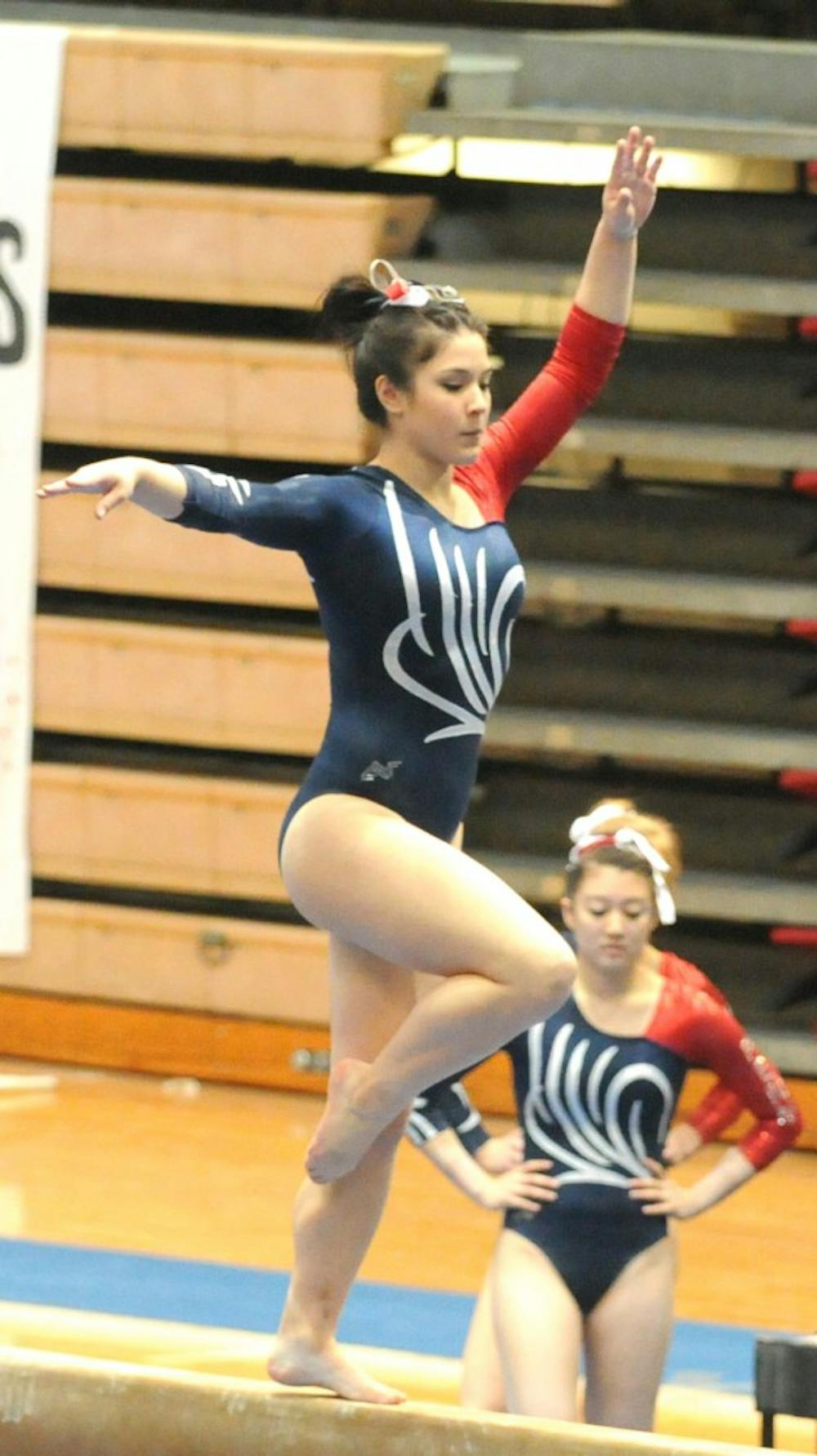How do you keep competing in a sport when you reach your peak before you even graduate high school?
It’s no secret in the gymnastics community that a female competitor usually peaks around the age of 16, long before one enters college.
So to be a successful college gymnast, these athletes must maintain the strength, size and skill that they had at that age and carry it through four more years of competition.
Gymnastics is by no means a varsity sport that one can simply pick up on a whim once they step on campus. Most NCAA Division I gymnasts have been competing since they were six or seven years old, and by the time they get to college, they have already reached Level 10, the highest level in USA Gymnastics.
Many of Penn’s gymnasts have felt the effects of training at such a high level for a significant portion of their lives.
“I’ve been competing at a high level for years and years, so it’s definitely taken a toll on my body,” senior Dana Bonincontri said.
USAG is the sole national governing body of gymnastics in the United States, pushing aspiring stars through its renowned Junior Olympic program.
But this is not to say that the Junior Olympic program is a carbon copy of the grueling college season.
SEE ALSO
Brief | Penn gymnastics falters at Ivy championships”
Penn gymnastics seeks Ivy Classic three-peat
“The [college] season is a lot longer, so you train differently, you need to be prepared to have a lot more meets,” freshman Elyse Shenberger said.
Of the five women on the gold medal-winning 2012 USA Olympic team, two were 16 years old, one was 17, one was 15 and only one was 18. That’s no coincidence.
A younger gymnast usually has more power and flexibility, making it easier to perform many of the complex routines that require incredible coordination.
She is also usually smaller, which is often advantageous.
It takes less time for smaller gymnasts to get stronger because less muscle is needed to support a smaller mass. The continuous wear and tear on the body and grueling practice schedule get increasingly harder as a gymnast gets older and often becomes unreasonable to maintain.
For most female gymnasts, college competition is the end of a long career in the sport. Unless one is still training with Olympic hopes, there is nowhere left to go.
“It’s not a sport you do your whole life, once you’re done with college, there’s not really anything else,” Shenberger said.
“In college, you learn how to work out differently, you have to be efficient on all of your turns and make sure you don’t have to take as long at practice so you’re not pounding as much, and you have to work on your consistency and making every turn count,” Bonincontri said. “My body is definitely ready to be done.”
Every four years, the world watches the Olympics with amazement as teenagers fly and flip through the air.
But the sport continues even as few watch on.
So in our own backyards and in colleges around the country, varsity women gymnasts are flipping and flying at ages much older than the stars you see on TV.
SEE ALSO
Brief | Penn gymnastics falters at Ivy championships”
Penn gymnastics seeks Ivy Classic three-peat
Penn gymnastics posts season-highs for all events in loss
Penn gymnastics awaits sole home meet



